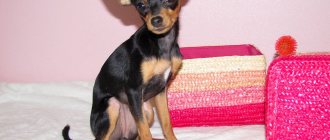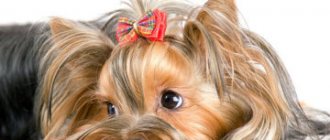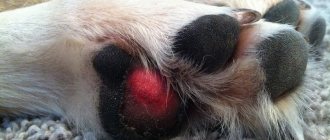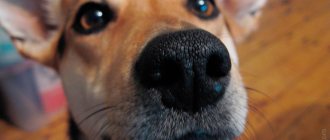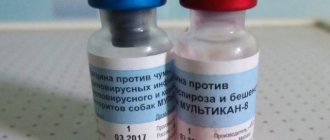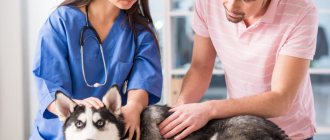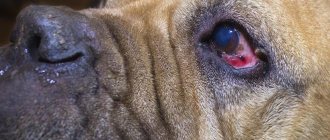Peculiarities
Some dog experts rightly believe : the smaller the dog, the more care and attention it requires.
In fact, if you have a German Shepherd at home, it’s hardly worth making sure that it doesn’t fall off the couch and hurt its paws. But with that terrier, such an incident could very well happen.
True, a good feature of this breed is their unpretentiousness in terms of home area. Do you have a small and cramped apartment? It doesn’t matter, a few square meters is enough.
Are you looking for how and where to set up a place for it? It is enough to lay a baby blanket folded several times somewhere in a corner and cover it with some kind of diaper.
In short, this is, of course, a dog, but a rather unique one.
you n’t walk a toy for hygienic purposes; he can get by with a cat litter box. Without a walk, the dog gets bored and becomes inactive.
Important! Just don’t lead your pet on a leash, especially when it’s a puppy, as this can cause crooked bones.
True, some owners still buy a special collar for such dogs, but for home use. It is equipped with a bell. The fact is that representatives of this breed love to literally follow people around the house and get under their feet, sneaking up behind them. To avoid accidental damage, it is better to equip your pet with an alarm .
Alopecia in dogs
Alopecia in dogs is the scientific name for hair loss and hair growth disorder .
- There are quite a few reasons for baldness, we will look at them in more detail in the article, but now let’s take a brief look at the main list, which will help you understand the scale of alopecia and the number of causes:
- Various parasites that have settled in the pet’s fur.
- Disease of the endocrine system: thyroid, hormones, adrenal glands, and so on.
- Bacteria on the skin.
- Impaired and weak immunity.
- Taking medications (for a long time or low-quality drugs).
- Defects associated with genes and heredity.
- Lack of various groups of vitamins and nutrients.
Signs of alopecia in dogs and diagnosis of the disease
itself occurs in different ways.
. It can be sudden baldness or quite gradual. The location of baldness also varies, because hair can fall out both in individual parts and everywhere at once. Moreover, in addition to hair loss, there are not always other symptoms if it is a serious illness and the dog does not look sick. If baldness is a primary disease, then this is the only symptom.
Diagnosis is carried out by experienced veterinarians who have already treated and determined the cause of baldness. He may notice, for example, that the bald spots are symmetrical, which means the dog most likely has problems with hormones. Demodectic mange in a dog occurs when hair falls out from different parts of the body. If the loss occurs only in one specific place, then most likely this is the body’s response to injections or infections.
The diagnosis is confirmed only after express tests
which our veterinarian conducts on-site.
Hormone and blood tests are performed, as well as hair trichogram and skin scrapings. There is a type of baldness called alopecia X , which means that the cause has never been determined. It occurs at almost any age in most breeds, but usually ranges from 2 to 5 years of age. Foci of disease can be found on the tail, groin, neck, hips, lower back, and so on. Usually the fur remains only on the head and paws, which are mainly the front ones.
When is alopecia in dogs not dangerous?
It is also worth considering that bald spots and baldness in general are sometimes the absolute norm and alopecia in dogs has nothing to do with it
. After all, there are breeds that are designed to be bald. These dogs include the Mexican dog breed, which is characterized by a hairless body, as well as the Chinese Crested dog breed.
Hair may also fall out due to shedding.
.
Shedding is common in animals. It depends on several factors. Firstly, molting occurs due to seasonality and the change of wool and fur coat. This is a biological process at the genetic level, so nothing can be done with it, just as it cannot be cured. The owner only needs to comb and brush the pet to control the shedding process and help the pet. After all, wool has its own way of matting, which makes it dirty. This is unhygienic and causes discomfort to the animal.
Secondly, a dog can unexpectedly shed due to stress
. Most often, this happens in cats, they are more timid. However, there are also a lot of shy dogs, so if your dog is one of those, you should follow some rules. Do not make unexpected loud noises, slam doors, or drop anything while the dog is sleeping and resting. Not all dogs also like guests in the apartment, especially those who come in noisily and after the doorbell rings.
How to trim nails?
Cutting your nails is a whole ritual. Although not very complicated - you don’t have to take your dog to the veterinarian for this.
So, let us highlight the main features of this procedure:
- Puppies' nails begin to be trimmed as early as 10-12 days, so that they do not injure their mother's belly during feeding; plus, puppies’ claws grow faster than adult dogs’, so the process can be repeated within a week;
- adults can undergo this procedure after 2 weeks;
- It is easy to determine the need for a haircut - the dog begins to click its nails on the floor;
- if your dog often walks on the asphalt, this kind of hygiene ritual may not be necessary;
- The claws are cut at the border of their bending; this is where the keratinized part is formed.
IMPORTANT! If during a dog manicure (or pedicure?) you touch the living tissue of the nail, blood may appear. Do not panic. Just drip hydrogen peroxide onto the microtrauma site.
What to do if your dog sheds a lot?
Ubiquitous hairs can be found everywhereRegular seasonal shedding that occurs in your pet in autumn or spring is a completely normal phenomenon that does not require any complex actions from the owner. The only thing you will have to spend time on is brushing the dog with a special brush, which collects all the extra hairs that are about to fall out. This simple procedure will protect upholstered furniture and carpets from contamination, and will also help your pet get through the molting period as quickly as possible.
But what to do if your dog sheds a lot:
- in the summer or in the middle of winter, that is, at a time when nature does not provide for a change of fur coat for animals;
- long time (longer than two to three weeks);
- at the same time, redness, irritation, inflammation, crusts, spots appeared on her skin;
- or you notice a noticeable odor that is unusual for your dog;
- or you just think that this process is too intense.
Any of the above factors requires immediate contact with a veterinarian, since during normal shedding nothing like this should happen. Animal fur, in addition to its main function, serves as an accurate indicator of health and reflects the condition of the entire organism. If it doesn't look the same as always, then the dog is sick.
So, you discovered that your dog sheds a lot - what should you do first? First of all, you need to determine why the dog’s hair is coming out, that is, identify the cause. The most common, in addition to natural ones (corresponding season), include:
- pancreatic diseases,
- liver diseases,
- dry fur,
- acute lack of vitamins (usually A, B, omega-3),
- worms,
- unbalanced diet,
- high temperature in the room where the dog is kept,
- she suffered severe stress,
- skin diseases,
- allergy.
First, you should try to fix what you can:
- hang a room thermometer on the wall and make sure that the temperature in the apartment does not exceed 26 degrees. If your home is warmer, this may be what causes your dog to shed;
- ventilate the room daily, do not close all windows tightly in the summer;
- take your pet outside even in bad weather;
- take care of drawing up a rational menu or allocate a certain amount monthly for the purchase of quality food (what kind of food is of high quality);
- eliminate a stressful situation for your pet, and then, after consulting a pharmacy, buy a suitable sedative (for example, cat-bayun);
- purchase an anthelmintic drug and give it to the dog, remembering to first study the instructions;
- buy good vitamins. When choosing, it is advisable to follow the recommendations of the doctor who examined the dog.
If all else fails, you will have to contact a specialist to:
- conduct a general examination of the patient;
- take blood tests to exclude or identify problems with the liver or pancreas;
- do an allergy test and scraping to diagnose skin diseases.
We do not recommend delaying your visit to the clinic, since the sooner the cause of molting can be determined, the sooner and more likely it will be eliminated.
It happens that a dog’s fur grows a lot during pregnancy, childbirth, and lactation. Gradually, this goes away on its own, does not require treatment and is explained by a temporary lack of important microelements in the mother’s body.
In older dogs, the hair may also fall out and fade, first on the face, and then over the entire surface of the body.
There are quite a few reasons that cause shedding, and not all of them are dangerous or require immediate elimination. However, you need to carefully monitor the coat of your four-legged friend and not let any changes in his appearance take their course.
All materials from the section “Caring for your pet’s fur.”
See also: Leptospirosis in dogs - symptoms and treatment Vaccination against piroplasmosis
| Mikhail January 14, 2021, 09:09 My food has been shedding all year, what should I do? |
| Dmitry December 28, 2021, 04:12 Lol, I also have Dolmatov, it sheds like crazy! All year round! Moreover, the hair is like needles, it digs into all the tissues, you won’t be able to pull it out! The beagle also sheds constantly, but not so profusely and the hair is removed from fabrics more easily |
| hope December 07, 2021, 01:28 My dolmat is shedding like crazy. No matter what they feed and drink, nothing helps. You can’t touch it instantly, covered in fur |
| Andrey January 26, 2021, 10:46 pm My Basset Hound dog lives for 3 years, she sheds more fur all year round than she does, what should I do? |
| Svetlana January 15, 2021, 03:37 pm I have a 3-year-old Labrador, not yet knitted, the fur is coming out in clumps, combed out, washed with shampoo Doctor, the fur is falling out now it’s hard, there’s dandruff, I feed it natural food, buckwheat beef, what should I do, my behavior is just as active, what should I do? |
| Lyuba November 04, 2021, 08:37 Hello, I have a dog living in my apartment for about 2 years, I don’t know exactly how it was given as a gift, he sheds all year, but before that he got hit by a car, I cured him, I have a dog, a husky cross, I don’t know with whom, what should I do with the fur? all over the apartment on the sofa, I’m already tired of cleaning and combing it every day |
| Natalya October 16, 2021, 04:04 pm Toy Terrier is 1 month and 5 days old, hair is coming out, what could be causing this? |
| Nelly March 25, 2021, 07:38 So my little dog has worms....what should I do if she is 2 years old, but has never walked with cables? |
| Alik September 27, 2015, 03:34 pm yeah, I know that the dog is climbing because of the high temperature. but they can’t explain anywhere about what to do about it |
| Olga. May 19, 2015, 12:59 Good advice, but what should those owners do who live in an area where there is not only a veterinary clinic or a veterinarian, but even a veterinary assistant? And there are not only mongrel dogs, but also purebred ones. And there is no way to get to a veterinarian. How to treat your beloved dog? |
| Irina November 30, 2014, 10:34 pm Well, a lot of good advice! |
Pages:
[1]
In progress
Grooming
If your pet has short hair (which is most common), a lot of dust and even small debris accumulates on it during walks. It is advisable to wipe the dog’s fur with a damp cloth or a very soft brush after walking. Toys, as a rule, do not require a combing procedure.
To protect against fleas and ticks, again while visiting the street, a special collar is recommended. Frequent use of special shampoo is not advisable.
What to do if it falls out
Of course, it's best to see a veterinarian because tests may be needed.
But if this is temporarily not possible, try to determine the cause, then there will be a way to eliminate it. A Toy Terrier may shed for the following reasons:
- due to seasonal molting; usually it takes place 2 times a year, but if it rarely walks, it can become year-round;
- for skin diseases, for example, for demadecosis - ringworm; here you need to look for a veterinarian or at least the appropriate medications;
- as a result of allergies; you can try eliminating dry food from your diet;
- use of antiparasitic collars; This thing is, of course, useful, but at home you need to take off the collar;
- experienced stress and suffered childbirth - here it is enough to put the dog into a calm mode.
Causes of dandruff in a toy terrier
- cosmetic;
- stress;
- food allergies;
- hormonal disorders;
- liver diseases;
- dermatitis and eczema;
- parasites;
- fungus;
- metabolic disease.
To prevent it, massage your baby’s head several times a day; this will provoke a rush of blood to the head, which will provide nourishment to the skin. Also use special shampoos and conditioners for dogs.
Attention! Introduce Omega-3, Omega-6 and vitamin A fatty acids into your pet's diet. Their action will help relieve your dog of dandruff and reduce skin inflammation.
Why does a toy terrier shed?
Starting from three to four months of age, toy terrier puppies begin to shed their fur and the dog becomes bald in places. This process is natural; there is no need to worry about why your toy terrier is going bald during shedding. And since molting is not a disease, it does not need to be treated. Shedding with the formation of bald spots on the body does not bring any suffering to your pet. It is impossible to interfere with the process of changing fur, so if shedding occurs, just be patient and calm. During shedding itself, small bald spots (bald spots) may appear on the dog’s body, looking like a moth-eaten plush toy. But after changing the coat, the bald spots heal.
The change of season (from autumn to winter and from winter to spring and summer) is also characterized by shedding in toy terriers. At the beginning of the article we talked about guard hair and undercoat. So, for the winter, the dog “acquires” a thick, warm undercoat that can save it from the cold. And when it gets warmer, the animal does not need to “wrap itself up” in a warm undercoat, which, moreover, cannot protect against overheating under the scorching sun. Therefore, the undercoat is gone. The four-legged friend changes his undercoat to thick outer hair.
Why does my breath smell?
Some believe that this is inherent in toys naturally.
But that's not true. There are a number of reasons why an unpleasant odor occurs: - changing teeth and concomitant bleeding of gums;
- formation of tartar;
- tooth decay and gum inflammation;
- excess protein food;
- diseases of the gastrointestinal tract, including malignant tumors.
Of course, contacting a veterinarian is the best way out, but, for example, a dog can be saved from tartar by regularly adding tomato juice to its diet.
